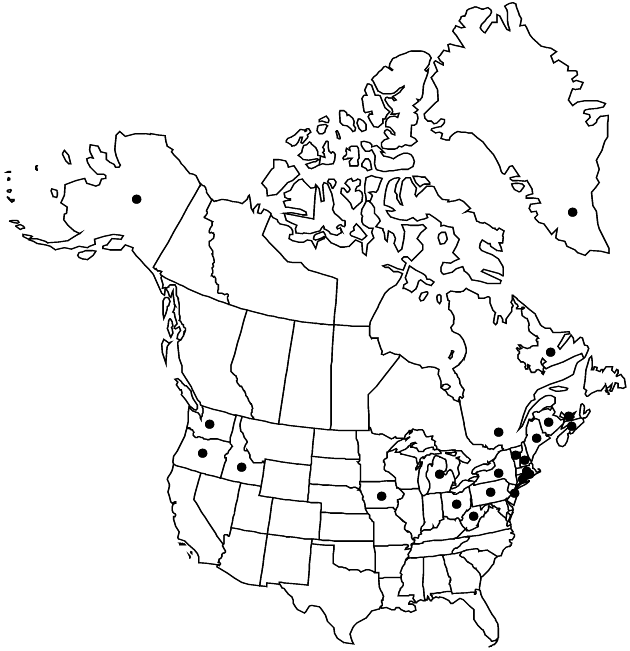Leontodon autumnalis
Sp. Pl. 2: 798. 1753.
Perennials, 10–80 cm. Stems 1–20+, decumbent, scapiform, usually branched distally, glabrous proximally, tomentose proximal to heads. Leaves: blades narrowly oblanceolate, 4–35 × 0.5–4 cm, entire to deeply dentate or lobed (lobes narrow, straight or slightly recurved), faces glabrous or hirsute, hairs usually simple. Heads (1–)2–5 in loose, corymbiform arrays. Peduncles bracteate proximal to heads. Calyculi of 16–20, narrowly triangular to subulate bractlets 2–4 mm, tomentulose. Involucres campanulate, 7–13 × 8–10 mm. Phyllaries 18–20, narrowly lanceolate, 10–12 mm, subequal, glabrous, sparsely tomentose, or coarsely hirsute. Florets 20–30; corollas deep yellow, 13–16 mm. Cypselae cylindric or fusiform, 4–7 mm (not beaked); pappi wholly of yellowish white or tan, plumose bristles 5–8 mm. 2n = 12, 24.
Phenology: Flowering Jun–Oct.
Habitat: Roadsides, pastures, open fields
Elevation: 10–1300 m
Distribution

Introduced; Greenland, N.B., Nfld. and Labr. (Labr.), N.S., P.E.I., Que., Alaska, Conn., Idaho, Iowa, Maine, Mass., Mich., N.H., N.J., N.Y., Ohio, Oreg., Pa., R.I., Vt., Wash., W.Va., Eurasia.
Discussion
Leontodon autumnalis is recognized by the usually branched stems with (1–)2–5 heads, peduncles bracteate proximal to heads, non-beaked cypselae, and pappi wholly of plumose bristles. It is now established in eastern North America and is sporadic in the west. Specimens with coarsely hirsute phyllaries have been recognized as var. pratensis; intermediates occur and the characteristic does not seem to correlate with other characters.
Selected References
None.
